Jose Raul Capablanca - The Human Chess Machine

Jose Raul Capablanca
He won the World Championship in 1921 beating Emanuel Lasker 4-0 (10 draws). Capablanca claimed that he had never opened a book on openings. He was born gifted with a natural understanding of chess fundamentals. His intuitive appreciation of the nature and possibilities of a position were on a par with those of Paul Morphy.
He was at his strongest during those 10 years (1914-24), playing with extraordinary accuracy. He was successful because his positional awareness was superior to that of his rivals. He was especially efficient when simplifying complex positions to endgames, all the while preserving a small but decisive advantage. You can read and submit Capablanca games and stories.
Young Jose

A very young Jose Raul Capablanca tries conclusions with his father
I was not yet five years old when by accident I came into my father's private office and found him playing with another gentleman. I had never seen a game of chess before; the pieces interested me, and I went the next day to see them play again. The third day, as I looked on, my father, a very poor beginner, moved a Knight from a white square to another white square. His opponent apparently, not a better player, did not notice it.
My father won, and I proceeded to call him a cheat and to laugh. After a little wrangle, during which I was nearly put out of the room, I showed my father what he had done. He asked me how and what I knew about chess? I answered that I could beat him; he said that that was impossible, considering that I could not even set the pieces correctly. We tried conclusions, and I won. That was my beginning.
Havana Chess Club
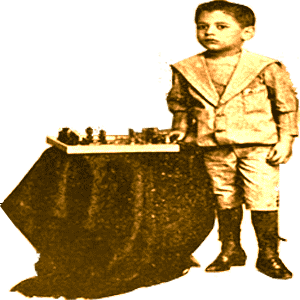
Jose Raul Capablanca was a child prodigy
Capablanca later recalled that some 20 years later, a Russian Master named Taubenhaus, who was visiting the club at that time, would joke saying, "I am the only living master who has given Mr. Capablanca a Queen."
He parted company with chess for a time, as the doctors said that continuing to play would harm him. He would not play much chess over the following 7 years. Apart that is from a 2-3 month period when he visited the same Havana Chess Club every Sunday when aged 8. This time the Club Champion, Don Celso Golmayo, was soon unable to give the boy a Rook.
Mixing with Masters
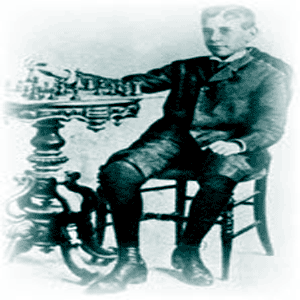
Jose Raul Capablanca played against strong opponents in the Havana Chess Club as a boy
Golmayo was dead and Juan Corzo from Madrid, Spain (he had immigrated to Cuba when he was 14) was the Cuban Champion. Capablanca soon showed that he was still getting better. Within 3 months he had reached the first rank.
The top players at the club arranged to play 2 games each against him to see where he sat in the hierarchy. He lost his 2 games against Corzo but proved stronger than the others.
Everyone was really impressed with him, this boy who had never opened a book on chess. They believed that with some preparation and study he could beat Corzo. He was given some books, he said he enjoyed the one on endings, and a match was arranged.
Facing Corzo
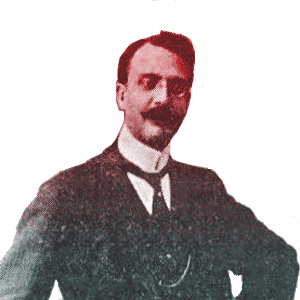
Jose Raul Capablanca played against the Cuban Champion, Juan Corzo, shortly before his 13th birthday
I began to play with the conviction that my adversary was superior to me; he knew all the openings and I knew none; he knew many games of the great masters by heart, things of which I had no knowledge whatever; besides, he had played many a match and had the experience and all the tricks that go along with it, while I was a novice.
The first two games were quickly won by him, but something in the third, which was a draw, showed me that he had his weaknesses and gave me the necessary courage and confidence. From there on he did not win a game, and only scored five more draws before I won the four required.
The victory made me, morally at least, the champion of Cuba. I was then twelve years old. I had played without any book knowledge of the openings; the match gave me a better idea of them. I became more proficient in the middlegame and decidedly strong once the Queens were exchanged. Capablanca - Corzo (1901).
Manhattan Chess Club
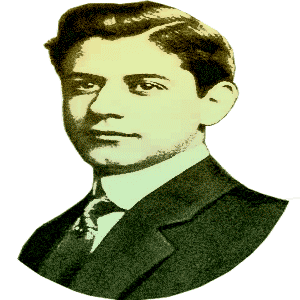
Jose Raul Capablanca joined the Manhattan Chess Club in 1905
It was around this time that he paid his first visit to Manhattan Chess Club. He had not played much chess since his match with Corzo four years before.
He settled in though as if he had never been away from the game. He won his first game "in good style, against one of the many first-class players of that famous club". He would visit on Sunday afternoons and within a year was recognized to be equal to any who played there.
Capablanca and Marshall
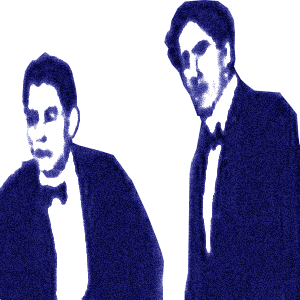
Jose Raul Capablanca won comfortably against Frank James Marshall in 1909
As a result he was particularly suited to blitz chess and simultaneous exhibitions. He toured the United States playing simuls in the major cities. He played 602 games in 27 cities scoring a 96.4% success rate. Maroczy's 88% and US Champion Frank Marshall's 86% did not compare.
These stats were enough to earn him a match against Marshall in 1909. Marshall was a great player in his own right. Capablanca blew him out of the water however on a score of 8-1 with 14 draws. It is telling that 9 of those 14 draws came in the last 10 games of the match. Clearly Marshall had realized he was outmatched and started playing for draws. This match put Capablanca firmly on the map as a major player.
San Sebastian

Jose Raul Capablanca sitting among other players in San Sebastian in 1911
For his part Marshall agreed to come but insisted that Capablanca also be invited. Capablanca was unknown in Europe but Marshall put forward the case that he was far too good to be ignored. In the end the organizers relented and admitted him.
Some of the European players were a bit put out that this non-entity was allowed to participate. You needed at a minimum, two 3rd place finishes in a master's tournament. This fellow had never even played in one! Bernstein and Nimzowitsch formally objected to his inclusion. Capablanca promptly responded by routing both on the way to winning the tournament. Only Pillsbury had previously won a major at the first attempt.
On the Title Trail
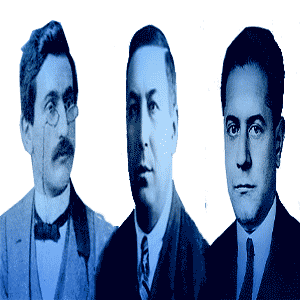
Jose Raul Capablanca and Akiba Rubinstein emerged as major contenders for Emanuel Lasker's title
He won New York 1913 ahead of Marshall but was runner-up to the same player in Havana shortly after. Next he scored a clean sweep to capture the 1913 Rice Cup. Their first meeting took place at the St. Petersburg tournament in 1914. Capablanca seemed on course to breeze to overall victory after a great start. But late on he lost against Lasker and the following game against Tarrasch which allowed Lasker to take it by half a point.
Alexander Alekhine offered the following observation during the St Petersburg Tournament: His real, incomparable gifts first began to make themselves known at the time of St. Petersburg, 1914, when I too came to know him personally. Neither before nor afterwards have I seen - and I cannot imagine as well - such a flabbergasting quickness of chess comprehension as that possessed by the Capablanca of that epoch. Enough to say that he gave all the St. Petersburg masters the odds of 5–1 in quick games - and won! With all this he was always good-humoured, the darling of the ladies, and enjoyed wonderful good health - really a dazzling appearance. That he came second to Lasker must be entirely ascribed to his youthful levity - he was already playing as well as Lasker.
The War Years
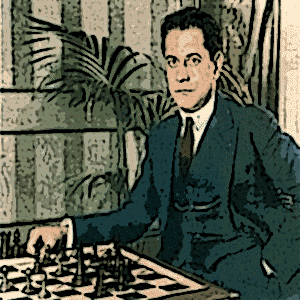
Jose Raul Capablanca spent the war years in the United States, Cuba and South America
He went on to win the 1916 Rice Cup in spite of losing a game for the first time since St Petersburg against Oscar Chajes.
He finished top again at the 1918 Manhattan Chess Club Tournament. Here he scored a famous win against the Marshall Attack. Boris Kostic came in 2nd and was undefeated in the tournament. Capablanca won the 1919 Hastings Victory Congress. Kostic was again 2nd and the only player to share the point with Capablanca. He challenged the Cuban to a match. It was agreed that the winner would be the first to win 8 games but Kostic resigned the match after losing the opening 5 games.
Capablanca vs Lasker

Jose Raul Capablanca beat Emanuel Lasker in 1921 to become World Champion
The two signed an agreement to play a World Championship match in Havana, Cuba in 1921. Lasker resigned the title and declared Capablanca the champion a year before the match was played. Capablanca acknowledged this in writing. The match would be played over 30 games.
In the end the match did not go the distance. Lasker threw in the towel after just 14 games. Capablanca lead 4-0 (10 draws) and Lasker did not want to fight on. At the age of 32, Jose Raul Capablanca was the Champion of the World.
The Capablanca Era
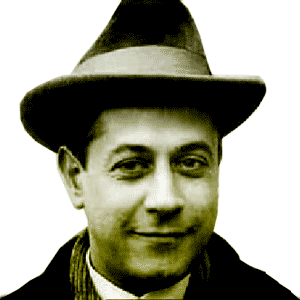
Jose Raul Capablanca reigned as World Chess Champion from 1921-27
Meanwhile the champion continued to blaze a trail in top tournaments. He started poorly with 4 draws and his first defeat in 8 years at the hands of Richard Reti before recovering well to finish 2nd behind Lasker at New York 1924. He finished 3rd at Moscow 1925 and won at Lake Hopatcong 1926. He recorded a brilliant victory in the elite New York 1927 Tournament to cement his reputation as the best player in the world.
Capablanca recognized Rubinstein as the rightful challenger, giving him until 31 December, 1923 to forward his deposit but he was unable. He turned to Nimzowitsch a couple of years later when he challenged. Nimzowitsch was given until January 1, 1927 to find the money but he also came up empty. Finally some Argentinean businessmen backed by their President agreed to fund Alekhine's challenge if the match was played in Argentina. This deal stuck and the match was set for September 1927.
Capablanca vs Alekhine

Jose Raul Capablanca lost the title to Alexander Alekhine in 1927
Capablanca had been on record before that recent New York triumph saying that he had peaked in 1919 and his rivals had improved. In spite of this he probably did not foresee anything other than victory in this World Championship decider.
He did not prepare for the match to any great extent whereas Alekhine worked on his physical fitness and studied many of Capablanca's games very closely.
Alekhine was certainly the more focused of the two, determined to give the match everything he had. He had his match face on and stunned Capablanca, beating him 6-3 (25 draws).
Capa's Endgame

The final resting place of Jose Raul Capablanca in Havana, Cuba
2nd at Bad Kissingen 1928, 1st at Budapest 1928, 1st at Berlin 1928, 1st at Ramsgate 1929, 2nd at Carlsbad 1929, 1st at Budapest 1929, 1st at Barcelona 1929 1st at Hastings 29/30, 2nd at Hastings 30/31, and 1st at New York 1931. But he could not manage to agree terms with Alekhine and relations soured between the two as a result.
Capablanca retired from top level chess in 1931 when he felt that he was being frozen out of a chance to win back the title. He made a comeback at the end of the decade with renewed hope of becoming World Champion again. He finished 2nd at Margate 1935, 2nd at Margate 1936, 1st at Moscow 1936, 1st at Nottingham 1936 and 1st at Paris 1938. He suffered a setback finishing 7th in the 1938 AVRO Tournament. He recovered somewhat to pick up a gold medal in the Chess Olympiad that year. While there he again tried to organize a title shot with Alekhine but was unsuccessful. He finished 2nd at Margate 1939.
Towards the end of his life he suffered from high blood pressure and mild strokes. On the 7th of March 1942, Capablanca was watching a skittles game with friends at the Manhattan Chess Club when he suddenly collapsed. He was rushed to the Mount Sinai Hospital, where he died the following morning aged just 52. He was survived by his wife, his ex-wife and two children.
Legacy of Capablanca
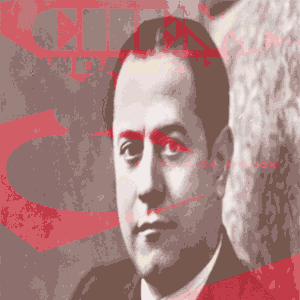
Jose Raul Capablanca like Paul Morphy liked to keep it simple and therein lay the brilliance
Capablanca's games are personified by quick development with a minimum of fuss. They contain apparently quiet moves that lay the foundations for plans that would come to fruition much later in the game. He is one of the earliest players to play openings with the endgame in mind.
He also wrote some chess books. The most notable of these, Chess Fundamentals, was described by Mikhail Botvinnik as the best chess book ever written.
Share Your Jose Raul Capablanca Anecdotes and Games
The problem with biographies is you must concentrate on breadth and can never go as deep as you would like. You can mention the major events in someone's life but can't allow yourself to indulge in intricate detail. Jose Raul Capablanca began to show his genius from as early as four years of age. There must be countless anecdotes and interesting accounts of different episodes and incidents throughout his time. Many of these stories would have originated from among the great many people that he would have met in different parts of the world. Some of these accounts give us an insight into what kind of man he was, what made him tick. Or if you prefer you could annotate one of his games, reflecting his genius over the board. Do you know of an interesting story or game from the life of Jose Raul Capablanca? Share Your Jose Raul Capablanca Anecdotes or Games With Us.
Jose Raul Capablanca Anecdotes and Games Left by other Contributors
Click below to see Jose Raul Capablanca Anecdotes and games by other Contributors...
Capablanca - San Sebastian Not rated yet
Capablanca y Graupera was born in November 19, 1888 and died on March 8, 1942. He was a Cuban world-class chess player of the mid-twentieth century. He …
Moving On
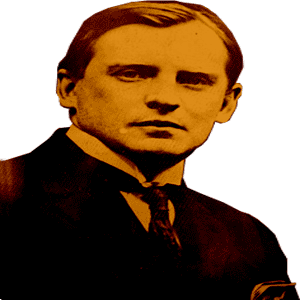
Alexander Alekhine
He also had the following to say on Morphy: I play in the style of Morphy, they say, and if it is true that the goddess of fortune has endowed me with his talent, the result (of the match with Emanuel Lasker) will not be in doubt. The magnificent American master had the most extraordinary brain that anybody has ever had for chess. Technique, strategy, tactics, knowledge which is inconceivable for us; all that was possessed by Morphy fifty-four years ago.
Next we will turn to the man to took Capablanca's World Championship from him, the Russian Alexander Alekhine.






